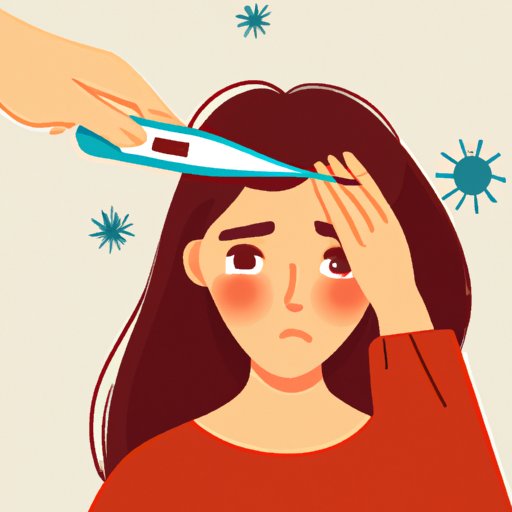
How to Know if You Have a Fever: A Comprehensive Guide for Everyone
Have you ever wondered whether you have a fever, but you weren’t sure what to look for? A fever is a common symptom of many illnesses, including the flu, colds, and infections. Although it may be a sign that your body is fighting off an infection, it’s important to know how to measure your body temperature and when to seek medical attention. In this article, we’ll review the most common symptoms of a fever, how to measure your body temperature, types of fever, treatments for fever, when to seek medical attention, and best practices for preventing fever.
Symptoms to Watch Out For
The most common symptoms of a fever include chills, sweating, headache, muscle aches, and fatigue. You may also experience a loss of appetite, dehydration, and mood changes. In some cases, you may have additional symptoms that indicate a more serious issue, such as shortness of breath, chest pain, or severe headache. If you experience any of these additional symptoms, it’s important to seek medical attention immediately.
Measuring Your Body Temperature
One of the simplest ways to know if you have a fever is to measure your body temperature. The most accurate method is to use a thermometer, which can be purchased at a drugstore or online. There are several types of thermometers, including digital, ear, and temporal artery thermometers. Other less common ways to measure body temperature include using a Basal Body Temperature (BBT) thermometer or a mercury thermometer. Once you have your reading, it’s important to accurately interpret the number. A normal temperature range for adults is generally considered to be between 97°F (36.1°C) to 99°F (37.2°C). However, body temperature can vary throughout the day and may be affected by age, gender, and activity level.
Types of Fever
Fever can be classified into different types based on the degree of body temperature elevation. A low-grade fever can be defined as between 100.4°F and 102.2°F (38°C–39°C), while a high fever is typically defined as anything above 102.2°F (39°C). A persistent fever, or one that lasts longer than three days, may indicate a more serious condition. A fever that is caused by a bacterial infection may also be accompanied by a rash or swollen lymph nodes. Knowing the type of fever can help your doctor determine the underlying cause of your symptoms.
Treatments for Fever
If you have a fever, there are a few treatments that you can try at home. First, be sure to stay hydrated by drinking plenty of fluids, such as water or electrolyte drinks. Over-the-counter fever reducers, such as acetaminophen or ibuprofen, can help bring down your temperature. It’s important to only take medication as directed, and to understand that the medication may only relieve the symptoms but not the underlying illness. Rest is also important if you have a fever, as it allows your body to focus on fighting off the infection.
When to Seek Medical Attention
In some cases, a fever may indicate a more serious medical condition that requires immediate attention from a doctor. If your fever is higher than 103°F (39.4°C), if you are experiencing shortness of breath, or if you have symptoms of meningitis, it’s important to seek medical attention right away. Other warning signs include chest pain, confusion, abdominal pain, and seizures. Infants and young children should also be evaluated by a doctor if they have a fever.
Best Practices for Preventing Fever
The best way to prevent a fever is to practice good hygiene, such as frequent hand washing and avoiding close contact with sick individuals. Getting vaccinated against illnesses such as the flu can also reduce your risk of fever. It’s important to stay healthy by getting enough sleep and exercise, and maintaining a balanced diet.
Conclusion
Knowing how to identify and manage a fever is an important skill for everyone. By recognizing the symptoms, measuring your body temperature accurately, and seeking medical attention when necessary, you can stay informed and take control of your health. By practicing good hygiene and staying healthy overall, you can reduce your risk of getting sick. Remember to always follow your doctor’s advice when it comes to managing a fever, and don’t hesitate to seek medical attention if you have any concerns.




